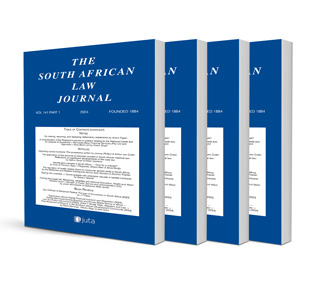When the legal pathways for sound financial management and spatial justice collide: The case of South African cities

When the legal pathways for sound financial management and spatial justice collide: The case of South African cities
Author: Anél du Plessis
ISSN: 1996-2177
Affiliations: Professor of Law and NRF South African Research Chair in Cities, Law and Environmental Sustainability, Faculty of Law, North-West University
Source: South African Law Journal, Volume 139 Issue 3, p. 650-677
https://doi.org/10.47348/SALJ/v139/i3a7
Abstract
This article probes one aspect of spatial (in)justice and slow spatial transformation in South Africa’s cities. The focus is not so much on case studies or an analysis of persisting spatial injustices. Instead, the article focuses on the legal premises and the apparently colliding legal pathways for sound municipal finance management and spatial justice. It specifically questions, through a mixed research method, the extent to which the co-existence of the Spatial Planning and Land Use Management Act 16 of 2013 (‘SPLUMA’) and the Local Government: Municipal Finance Management Act 56 of 2003 (‘MFMA’), as two Acts in the suite of post-apartheid South African local government legislation, runs the risk of thwarting local government efforts to transform social and physical space in the country’s cities. This question is considered through an exploratory review of the Acts, empirical findings, and a consideration of the limited theory on the interoperability of laws.